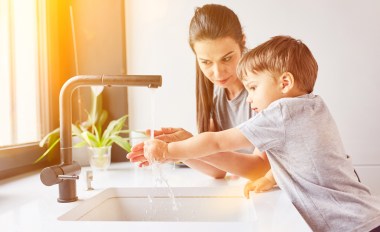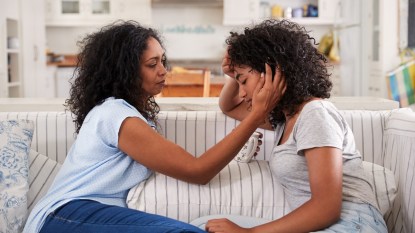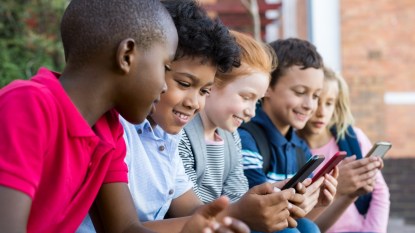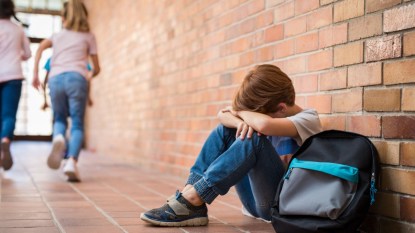Our Kids Are Becoming Couch Potatoes – These 12 Physical Activities Will Get Them Moving
Movement matters!
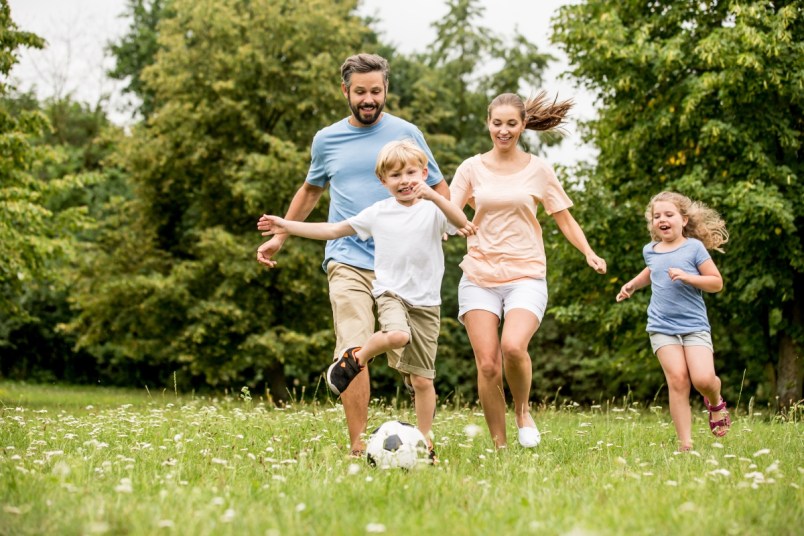
Kids are built to move. Whether they’re rolling back and forth, sitting up, crawling, or eventually, walking, it’s in their nature to want to get going. Babies, for example, are hardwired to lift themselves up as soon as they start to gain control over their bodies. By the time they’re two or three, most kids are racing about, kicking balls, and tearing it up on tricycles.
All too often, however, our kids and grandkids quickly slow down. Whether it’s the lure of the screen or limited time outside of school and extracurriculars, it’s gotten harder and harder to get kids moving: According to the Centers for Disease Control and Prevention, just 21.6 percent of US kids ages six to 19 get more than an hour of moderate-to-vigorous physical activity at least five days a week.
“Physical activity is beneficial for all ages, but for kids it’s especially important,” notes Magdalena Oledzka, DPT, director of pediatric rehabilitation at the Hospital for Special Surgery in New York City. “It stimulates growth; strengthens muscles; builds strong bones; boosts cardiovascular health; prevents obesity; and improves cognitive functions like memory, processing speed and attention.”
Movement is so important that the government’s 2018 Guidelines for Physical Activity report recommended that kids as young as age 3 get at least 60 minutes of activity each day. This doesn’t mean kids need their gym memberships. In fact, they thrive on unstructured play. “We want to encourage our kids to do any activity they can in a safe environment,” says Len Saunders, educator and author of Generation Exercise.
And don’t be scared off by the one-hour guideline. “It doesn’t have to mean doing 60 minutes of physical activity all at once,” says Saunders. Walking 10 minutes to and from school, 20 minutes running in the playground, and 20 minutes playing in the backyard all count. Try these other strategies for helping kids increase their activity levels.
Infants
You may not think movement is terribly important when your baby can’t even crawl, but even infants can start to build the strength and skills they need to thrive. That starts with giving your baby plenty of supervised tummy time. “Take babies out of the bouncy seat, car stroller, swing and other containers and allow them to get on a mat on both their back and belly so they can start to practice rolling around,” says Oledzka. This not only helps strengthen important muscles, it also helps prevent plagiocephaly, or flat head syndrome, and improves gross motor skills and vision development. Aim for about an hour of tummy time a day. (Break this into smaller 10- to 15-minute chunks; few infants can last an hour at a time.)
Toddlers
“For toddlers, fitness is really playtime,” says Oledzka. Play is how kids learn about themselves and the world around them. It’s also how many social and cognitive skills are developed. “Parents often think even young kids’ days need be scheduled from the moment they wake up until bedtime, but they also need time to just play,” says Catherine Tamis-Lemonda, Ph.D., professor of applied psychology at New York University. Her research shows that more than half of a toddler’s wake time is spent playing with toys and other objects. “Kids play with everything, from boxes and bottles to traditional toys,” she explains. “It’s a way for them to see how things fit together and practice fine motor skills, spacial concepts and other important developmental skills.”
So give your toddler lots of time to run around. “Often, once a child can start to walk they won’t sit still,” adds Tamis-Lemonda. And all that movement helps them grow. “Running from room to room may not look like it has much purpose, but it all feeds into cognitive and motor development.”
Preschoolers
As kids get a little older, physical activity becomes even more important to both development and socialization. “Young kids still have this innate drive to move,” says Oledzka. But many preschoolers spend hours a day planted in front of the TV or a device instead of running around. In fact, our preschoolers today are only about one-fourth as active in their day-to-day lives as their grandparents were, according to the American Academy of Pediatrics.
Building in play time with games and sports helps improve motor skills and coordination. Help things along by offering age-appropriate equipment like balls and plastic bats, scooters, bikes, or trikes. Get the whole family in on it — take a short hike on the weekend, play tag, head for the park — whatever you can do to move together.
Elementary School
Once kids hit kindergarten, they’re often spending hours at a time sitting still. “This is when it’s more important than ever to keep promoting movement,” says Oledzka. Not every kid is a natural athlete, so that doesn’t necessarily mean signing up for Little League or skating lessons. Find activities that best interest your child, considering their personality, skills, size, and interests. “It all revolves around your child’s passions,” notes Alex Haschen, a personal trainer in Easton, Pennsylvania.
If your child or grandchild loves animals, take a hike and see what kind of critters you can spot. If they like to dance, put on music and have an impromptu party. “The important thing is to make fun the focus — it’s not always about being the best or winning,” adds Saunders. “Find an activity that your child enjoys and teach him to always give his best effort and be proud of his accomplishments.”
Middle and High School
“Around ages 10 to 12, kids often start slowing down and don’t want to run around as much,” says Oledzka. Often, movement is limited to organized sports or activities like soccer, ballet, or softball. But a twice-weekly practice or class isn’t enough activity to help keep them strong and healthy. And some kids don’t want to do any organized activity. So motivate where you can. “If your kid is really into sports, create movement around that with the end goal of improving performance. And if you have a kid who’s more interested in schoolwork than soccer, emphasize that physical activity will also help them do better in school,” says Haschen.
This might also be a time when your child becomes interested in doing some strength training. Keep things safe by focusing on body-weight exercises at first, like push-ups, pull-ups, sit-ups, and squats. For teens, supervised weight training with relatively light weights may also be appropriate. “Just make sure that you are teaching your child proper form or have them work with a trainer who can show them what to do,” adds Saunders. “It’s important to learn how to use the right technique so they’ll avoid injury and get the results they want.”
12 Physical Activities for Kids
- Create a fitness scavenger hunt. Plant items around the house with notes attached, suggests Saunders. Each time they find an object, include a fitness challenge, like doing five pushups or 10 jumping jacks.
- Play balloon ball. Try and go for a record on keeping a balloon in the air, advises Haschen. For an extra challenge, use only one hand or just feet! Go for time or “bumps.”
- Try an active game of charades. Make the categories sports, animals, professions, and exercises for extra movement, says Haschen.
- Have a dance off. Download a playlist and show your kids or grandkids your best footwork — then watch them do theirs.
- Curb tech time. Give your kids a goal to earn their screen time by instituting a rewards system. For every 30 minutes of activity (like going on a family walk or a bike ride) give them 15 minutes of screen time, advises Saundres.
- Find some indoor entertainment. Hit the trampoline or skate park or head for the rec center. “Sometimes it just helps to get out of the house and do something new,” says Haschen.
- Use commercial time wisely. Get the whole family off the couch during commercial breaks and do exercises like jumping jacks or pushups — or try to hold a plank pose (the up part of a push-up).
- Compete in a family push-up challenge. See if your family can set a goal of each doing 50 push-ups in a day. It doesn’t have to be all at once, says Haschen. For example: Do 10 pushups when you get out of bed, another five before breakfast, another five after breakfast, 10 after school, five before dinner, five after dinner, and 10 more about 20 minutes before bedtime. (Modify as necessary.)
- Hoop it up. Get those Hula-Hoops out and practice your twirling. You can do this without needing a lot of space. Find out who can keep it going the longest!
- Have a bean bag challenge. Walk around the house with a small beanbag or pillow balanced on your head or try going up and down the stairs without using your hands to hold it in place. Or you can have a beanbag catch or try setting up some plastic water bottles and making your own “beanbag bowling” alley.
- Try some yoga. There’s no shortage of family friendly yoga videos you can download to get everyone in on the asana, and kids love doing some animal poses like Lion’s Face or Downward Dog. Or just put on some relaxing music and practice deep-breathing and stretches — they’re perfect before bedtime.
- Build your own indoor obstacle course. Rainy day making your kids nuts? Challenge them to get through a DIY course. Try running up stairs, jumping over pillows, crawling under a broom that’s propped up on low tables. “Use anything in your house to get your kids jumping, running, crawling or climbing!” says Haschen.
A version of this article appeared in our partner magazine The Science of Raising Happy Kids.


